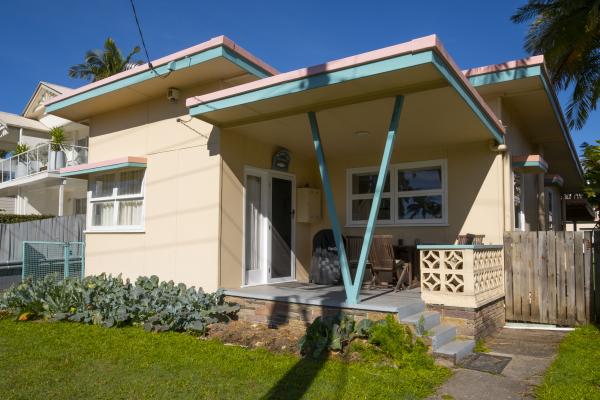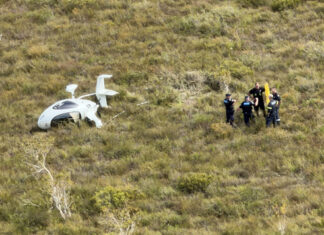Terry Page’s iconic beach shack on Gympie Terrace stands out for its classic 1950s style and one obvious reason – it’s the only one of its kind left in a street of contemporary houses and units.
It took the builder five years to find the two-bedroom 1956-built fisherman’s cottage that delivers him memories of an earlier simpler time.
“I like it. It reminds me of growing up here,“ he said.
Terry went to school in Tewantin and has seen many changes to his town over the years, many, such as traffic and noise, for the worse, he said.
Over the years Terry has made a few alterations to the house to make it more comfortable. He’s polished the floors and modernised the kitchen but the exterior, even its colour scheme will remain the same.
“I’ll never change it,“ he said. “It’s my era.“
The little house has occasionally attracted attention for its historic significance. It has appeared in magazines and was once named House of the Year.
The Noosa Shire has a collection of buildings of recognised historic value listed on the Queensland Heritage Register.These include Halse Lodge, the Majestic Theatre and police residence in Pomona, Cooroy’s railway station and Lower Mill site kilns, Kin Kin’s sawmill, Cooroora’s Masonic temple and Alfredson’s joinery in Cooran.
There are no classic beach shacks in this list but Terry Page’s house has been recorded on the website sunshinecoastplaces.com.au established by architect Roger Todd.
Since the postwar economic boom the beach shack has become synonymous with a romantic, carefree time when families were able to afford a block of land by the beach, erect a home and own a car to drive them to their holiday destination and leave their worries behind.
The cheaply constructed shacks favoured the easy cladding solution offered by fibrolite, manufactured in the 1950s. Mixed with vinyl, laminated plastic and fluorescent lighting it was quite appealing and because of its modular nature, almost anyone could build with it.
Post-war Australia was a time of huge optimism and new architectural designs including the Sydney Opera House, Mr Todd said.
Architects today continue to be inspired by the designs of the era including the early beach shacks.Beach houses lacked the pretension of city houses which may have been built to project someone’s wealth or standing in the community, Mr Todd said.
“When you got to the beach everyone was the same,“ he said.
“You could be open to modern design ideas. It was fun, it was at the beach. It was a place for holidays. You might not have done that in your city home.“
In 2011 Mr Todd began a campaign to document and protect the fibreboard shacks of Moffat Beach where he lives in one.
“There’s more than you think. A lot of them have been modified,“ he said.
For Todd the beach shack was the essence of what living at the coast really meant but one that was disappearing before his eyes.
The fibre shack was also celebrated in a project in 2014 between the University of the Sunshine Coast and the Gold Coast Gallery with a collection called the Fibre Coast project which took its cue from Mr Todd’s campaign.
Earlier this year the beach shacks at Moffat Beach were designated a character area.







